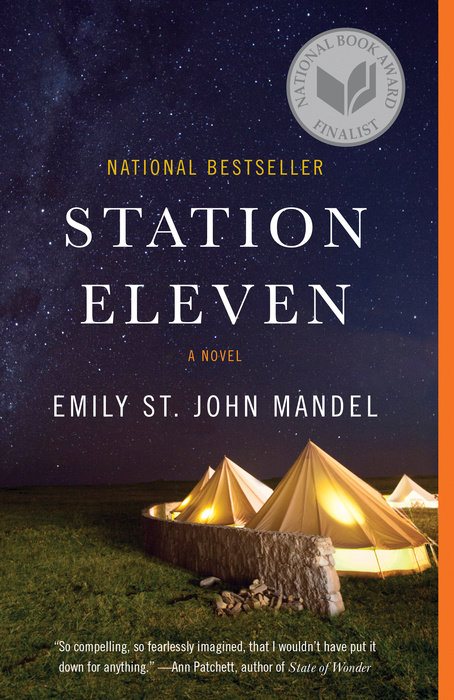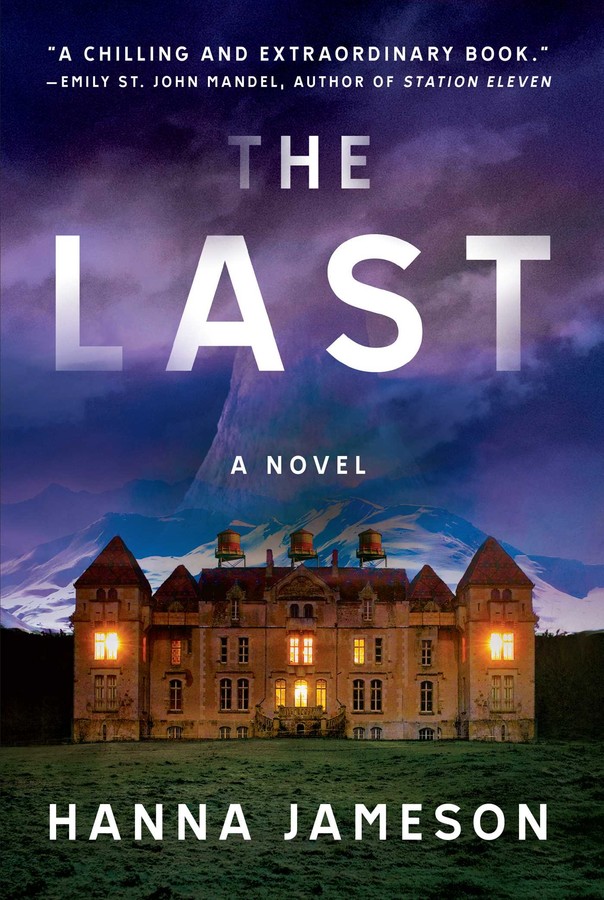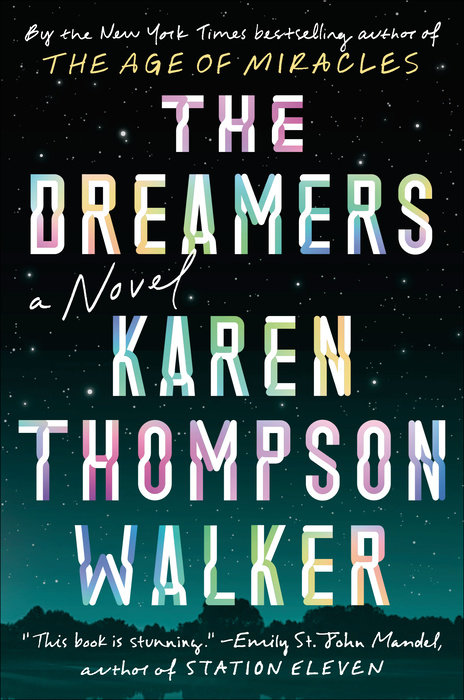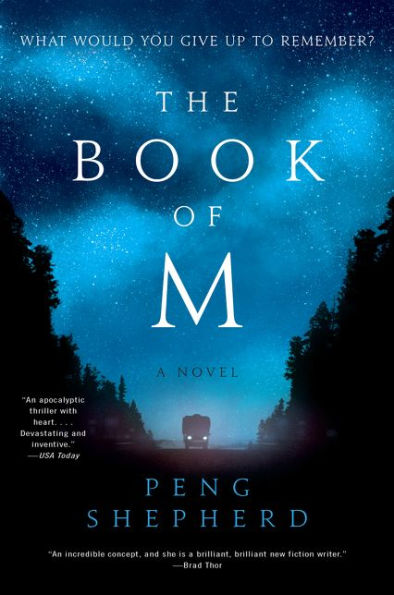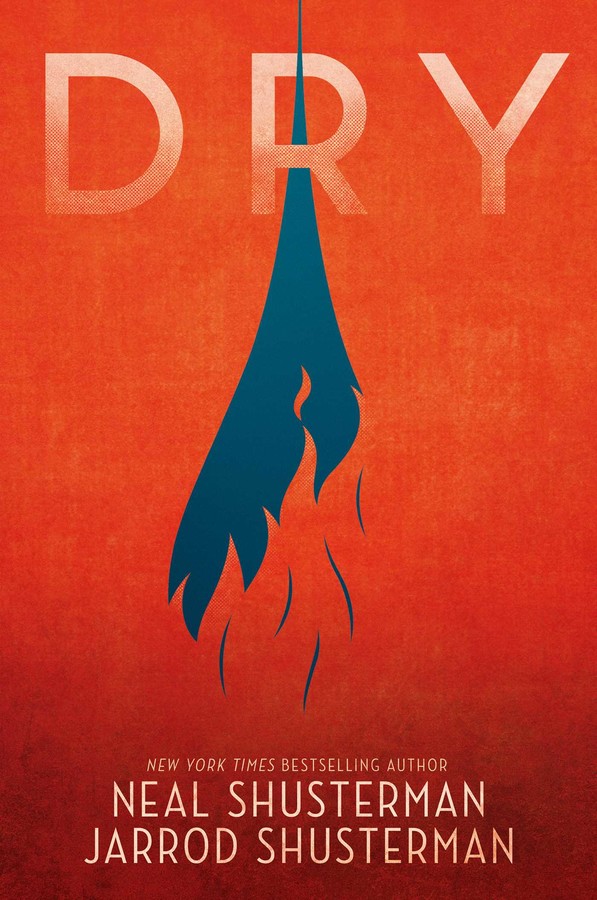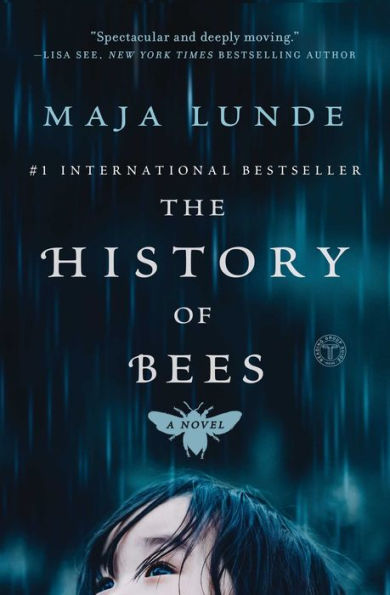What to expect when everything falls apart feels more digestible and, dare I say, inquisitively beautiful and introspective, at the hands of our favorite contemporary authors. Sure, in many scenarios we lose the ability to communicate outside our own makeshift societies or to devote large chunks of time to tasks usually performed by the bees we drove to extinction, but elements of humanity remain. The losses are large and uncertainties terrifying, but if we manage to survive, there’s a recharging of thought, of ingenuity, of strength. We’re forced to confront all we’ve chosen to ignore in ourselves, in others. Join these eight authors in experiencing iterations of shattered worlds.

A Reader’s Guide to the Impending Apocalypse
This is the most beautifully written of the list, the bulk of the book set after a pandemic decimates much of the world we know. The attention St. John Mandel draws to the arts, to the passions that sustain us, to the fragile and reconciliatory nature of humankind, sticks with me most. In this new, postapocalyptic world, a museum pops up in an empty airline hanger, a Traveling Symphony crawls its way through the countryside, communication and supplies are improvised by necessity. Even tenuous order attracts opposition, yet, in St. John Mandel’s care, threats surprise us with an interconnectedness and resilience that expand the way we view the trajectories of our lives.
If your favorite character is Eleven
You thought we’d go with an obvious magical kid book here. But don’t worry, there is more in common here than “Eleven” in the title. Emily St. John Mandel’s science fiction tale is set in a world that is flung into chaos and follows characters that are, despite the outcomes, trying to do the right thing.
“A chilling and extraordinary book”: this quote from St. John Mandel and the deep blue and purple mountains on the cover proved enough to draw me in. Jameson raises the stakes of a world wiped out by nuclear explosions with the discovery of a murdered girl in a water tank in a rural Switzerland hotel. Survivors at the hotel trace her death back to the beginning of the end and wonder if the murderer is still among them. Long nights and dwindling supplies, the lack of sun and the threat of oncoming winter, lead to perhaps the scariest question of all: If there is a killer in their midst, does it matter?
For fans of high-concept thrillers such as Annihilation and The Girl with All the Gifts, this breathtaking dystopian psychological thriller follows an American academic stranded at a Swiss hotel as the world descends into nuclear war—along with twenty other survivors—who becomes obsessed with identifying a murderer in their midst after the body of a young girl is discovered in one of the hotel’s water tanks.
Jon thought he had all the time in the world to respond to his wife’s text message: I miss you so much. I feel bad about how we left it. Love you. But as he’s waiting in the lobby of the L’Hotel Sixieme in Switzerland after an academic conference, still mulling over how to respond to his wife, he receives a string of horrifying push notifications. Washington, DC has been hit with a nuclear bomb, then New York, then London, and finally Berlin. That’s all he knows before news outlets and social media goes black—and before the clouds on the horizon turn orange.
Now, two months later, there are twenty survivors holed up at the hotel, a place already tainted by its strange history of suicides and murders. Those who can’t bear to stay commit suicide or wander off into the woods. Jon and the others try to maintain some semblance of civilization. But when the water pressure disappears, and Jon and a crew of survivors investigate the hotel’s water tanks, they are shocked to discover the body of a young girl.
As supplies dwindle and tensions rise, Jon becomes obsessed with investigating the death of the little girl as a way to cling to his own humanity. Yet the real question remains: can he afford to lose his mind in this hotel, or should he take his chances in the outside world?
The sleeping sickness starts with one college student; quarantining the dorm floor is not enough. Soon the town is cut off, and those on a quickly assembled list—even infants thought to be at risk for contamination—are denied the chance to flee. Infected homes are marked; nearby inhabitants wait anxiously. Arbitrary strategies are determined; people push for meaning, for answers. What’s happening to the affected people while they sleep? How does the sickness choose its victims? One member of my book club ended our discussion by telling us it was the best book she’d ever read.
This book was recommended by a member of the same book club—with the caveat that she couldn’t tell me much about it for fear of accidentally saying too much. To me, that kind of ambiguity means that the author has tapped into an inventive concept or a unique take that often twists our perspective halfway through. I can tell you this: the book follows a young girl who lives in a cell when she’s not in class. Inside the classroom, she’s chained to a chair, watched by guards so she doesn’t disobey. Learning the status of the world beyond and the events leading to an uncertain future make this a fast-paced thriller worth every page. You can also catch this as a movie starring Glenn Close.
MENTIONED IN:
The second book on our list with a movie of the same name, BIRD BOX displays Josh Malerman’s talent for suspense and vivid description that often gave me chills. The premise itself is petrifying: an unseen force pushes people to violence. The only preventative measure is to keep your eyes shut, but blindly navigating a postapocalyptic world offers a new set of dangers. After exhausting all her options, Malorie, a young woman with two children, flees blindfolded down a river in hopes that she’s made a viable choice for her family. Excitingly, we haven’t heard the last from Malorie: Malerman’s sequel, appropriately titled MALORIE, will arrive later this year.
The striking cover embodies the darkness that settles over a person’s mind when they lose their shadow; the next stage is confusion, memory loss, the final detachment from earlier life. The global epidemic has no easy solution, not in the way of prevention or diagnosis or treatment; families hidden in rural areas to escape the looting and violence wait in terror for a shadowless morning that signals their loved one will soon slip away. A husband and wife—one with shadow, the other shadowless—separate in an effort to save each other, discovering an unrecognizable world at war, with factions who believe they’ve found answers and others exploiting the chaos to rule.
MENTIONED IN:
I wish we could label this YA novel as a far-distant future that we can read as a cautionary tale, but recent real-life events tell us otherwise. California is hit by a drought so severe that water conservation won’t prevent the water from running out entirely. Ill-prepared towns become scenes of life-or-death desperation, with neighbors accusing neighbors of hoarding water, each willing to sacrifice the lives of others to save their own families. A band of teens in search of a safer area is soon forced to decide what they’re willing to do to survive.
When the California drought escalates to catastrophic proportions, one teen is forced to make life and death decisions for her family in this harrowing story of survival from New York Times bestselling author Neal Shusterman and Jarrod Shusterman.
The drought—or the Tap-Out, as everyone calls it—has been going on for a while now. Everyone’s lives have become an endless list of don’ts: don’t water the lawn, don’t fill up your pool, don’t take long showers.
Until the taps run dry.
Suddenly, Alyssa’s quiet suburban street spirals into a warzone of desperation; neighbors and families turned against each other on the hunt for water. And when her parents don’t return and her life—and the life of her brother—is threatened, Alyssa has to make impossible choices if she’s going to survive.
This thought-provoking read weaves together three separate stories across three very different time periods, all centered around our relationship with bees. In the earliest scenario, a seed merchant works to design a beehive he hopes will completely change the way bees are kept and honey harvested. 155 years later, a beekeeper describes a life of diseased bee colonies, climate change, modernized tools. In the 2098 sections, humans have taken on the roles of the bees, pollinating trees. When compared to the other seven titles above, THE HISTORY OF BEES is less a complete collapse of civilization and more of a warning of the longstanding consequences from past choices, especially relating to the environment.

